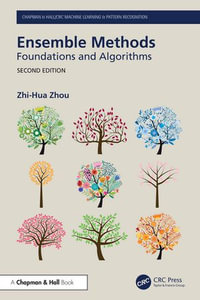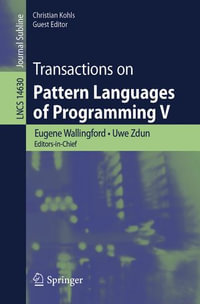
eTEXT
Identification of Continuous-time Models from Sampled Data
By: Hugues Garnier, Liuping Wang
eText | 13 March 2008 | Edition Number 1
At a Glance
eText
$369.01
Instant online reading in your Booktopia eTextbook Library *
Read online on
Not downloadable to your eReader or an app
Why choose an eTextbook?
Instant Access *
Purchase and read your book immediately
Read Aloud
Listen and follow along as Bookshelf reads to you
Study Tools
Built-in study tools like highlights and more
* eTextbooks are not downloadable to your eReader or an app and can be accessed via web browsers only. You must be connected to the internet and have no technical issues with your device or browser that could prevent the eTextbook from operating.
Identification of Continuous-time Models from Sampled Data brings together contributions from well-known experts who present an up-to-date view of this active area of research and describe recent methods and software tools developed in this field. They offer a fresh look at and new results in areas such as:
a [ time and frequency domain optimal statistical approaches to identification;
a [ parametric identification for linear, nonlinear and stochastic systems;
a [ identification using instrumental variable, subspace and data compression methods;
a [ closed-loop and robust identification; and
a [ continuous-time modeling from non-uniformly sampled data and for systems with delay.
The CONtinuous-Time System IDentification (CONTSID) toolbox described in the book gives an overview of developments and practical examples in which MATLABA(R) can be brought to bear in the cause of direct time-domain identification of continuous-time systems.This survey of methods andresults in continuous-time system identification will be a valuable reference for a broad audience drawn from researchers and graduate students in signal processing as well as in systems and control. It also covers comprehensive material suitable for specialised graduate courses in these areas.
Read online on
ISBN: 9781848001619
ISBN-10: 1848001614
Published: 13th March 2008
Format: PDF
Language: English
Publisher: Springer Nature
Edition Number: 1
You Can Find This eBook In
This product is categorised by
- Non-FictionComputing & I.T.Graphical & Digital Media Applications3D Graphics & Modelling
- Non-FictionMathematicsProbability & Statistics
- Non-FictionReference, Information & Interdisciplinary SubjectsResearch & InformationInformation theoryCybernetics & Systems Theory
- Non-FictionEngineering & TechnologyEnergy Technology & EngineeringElectrical Engineering
- Non-FictionEngineering & TechnologyTechnology in GeneralEngineering in General
- Non-FictionEngineering & TechnologyMechanical Engineering & MaterialsMechanical Engineering
- Non-FictionEngineering & TechnologyElectronics & Communications EngineeringElectronics EngineeringAutomatic Control EngineeringRobotics
- Non-FictionComputing & I.T.Computer ScienceComputer Architecture & Logic Design
- Non-FictionSciencePhysicsClassical Mathematics
























